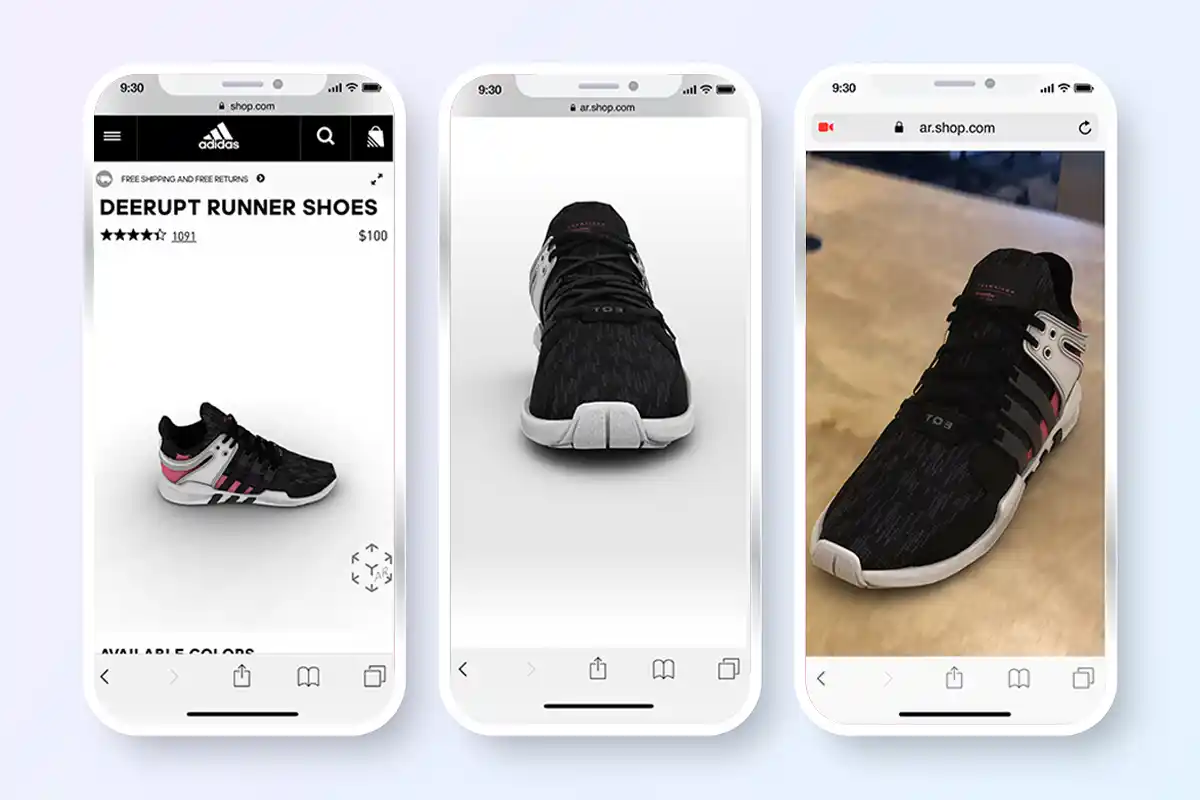Technology for a Purpose – Augmented Reality and its Role in e-Commerce
When you want to buy a Mercedes, you can download the Mercedes car app. It allows you to choose a Mercedes car model and configure it according to your requirements.
Then you can open the door of the car and experience how it would feel if you were seated inside the car. You can also place the configured model in your driveway or garage to see how it would look or use the drive mode to drive it around and virtually experience driving a Mercedes.
As a customer, wouldn’t this be just the thing to do before you even visit a store?
By configuring the car yourself and virtually driving it, you would be more prepared to make a decision when you arrive at the physical store to buy your Mercedes. In fact, it solves the big problem of choice in terms of colors and configuration for many customers.
Did you know that even the in-store Mercedes teams use the app to provide customers with visualization of how the car could look in their driveway? With the help of the app, they also show models of cars that the customers may be interested in which aren’t currently available in the showroom.
Isn’t it fantastic how the customer, as well as the sales team, have been benefitting from the app?
Technology for a purpose
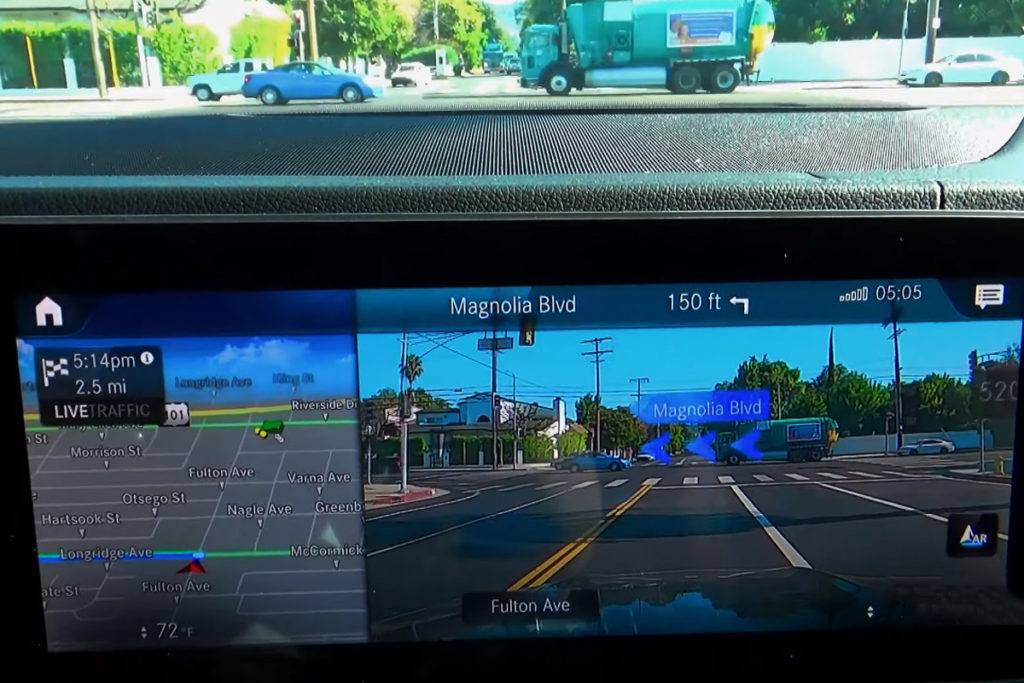
Mercedes put the technology of Augmented Reality into good use by providing consumers and sales professionals with an app to experience their cars and not just visualize them. But Mercedes isn’t really the company that is known for pioneering the use of AR in marketing products.
Long before Mercedes built their car app, IKEA introduced the world to IKEA Place, an app that uses Augmented Reality to help consumers see how a piece of furniture could look in their living or workspaces. The app was a roaring success, with IKEA reporting higher online sales after the launch of its app.
As customers around the world become more comfortable with online shopping, their expectations from brands regarding shopping experiences are increasing. This has led companies to push the boundaries for e-commerce experiences creating innovative solutions in response to common customer problems.
One big concern that many customers had about online shopping was that they did not know how the product could look when they brought it home. Dresses couldn’t be tried online, cars couldn’t be driven virtually and furniture couldn’t be checked physically. AR helps businesses solve many of these problems.
With AR apps, you can try on a dress by scanning yourself or using a picture of yourself and trying on different dresses virtually. You can place furniture in your room virtually and check how it would look if you decided to buy it.
What do we know about AR?
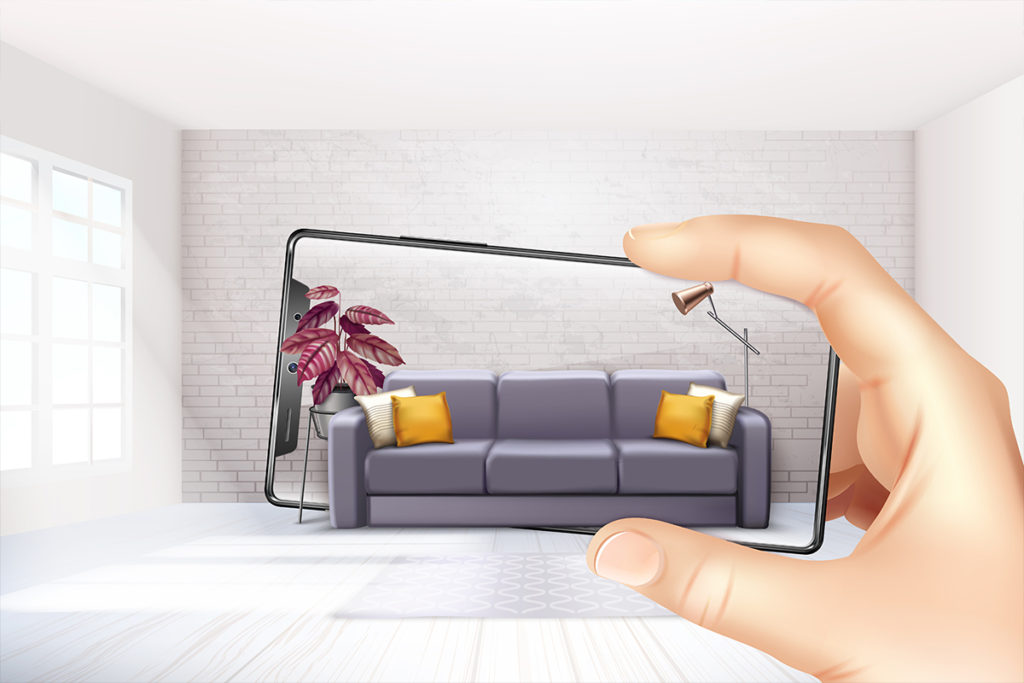
Augmented Reality is a technology that allows you to create an interactive and immersive experience of the real world on a digital device like computers, laptops, phones, and tablets. It can be used in many ways across many industries. One of the earliest adopters of AR technology was the gaming industry.
Games like Pokemon have been investing in immersive experiences for a long time which has given them considerable traction around the globe.
The e-commerce industry has started adopting the technology, but right now it is mostly used by the big players. Small business owners are just not sure of how it would work for their websites and some feel that the cost of using the technology will be high, so many of them are just waiting for AR to become cheaper before they incorporate it into their websites.
It is much like the use of responsive technology to make websites more accessible on different screen sizes. The big companies made their move and many smaller companies delayed the move till there was no option but to make their websites responsive.
But this delay in moving to mobile websites led customers to move to competitors because they were shopping from their mobiles and not their computers.
So even though businesses may want to wait this out, becoming an early AR adopter can be highly profitable.
Benefits of using AR
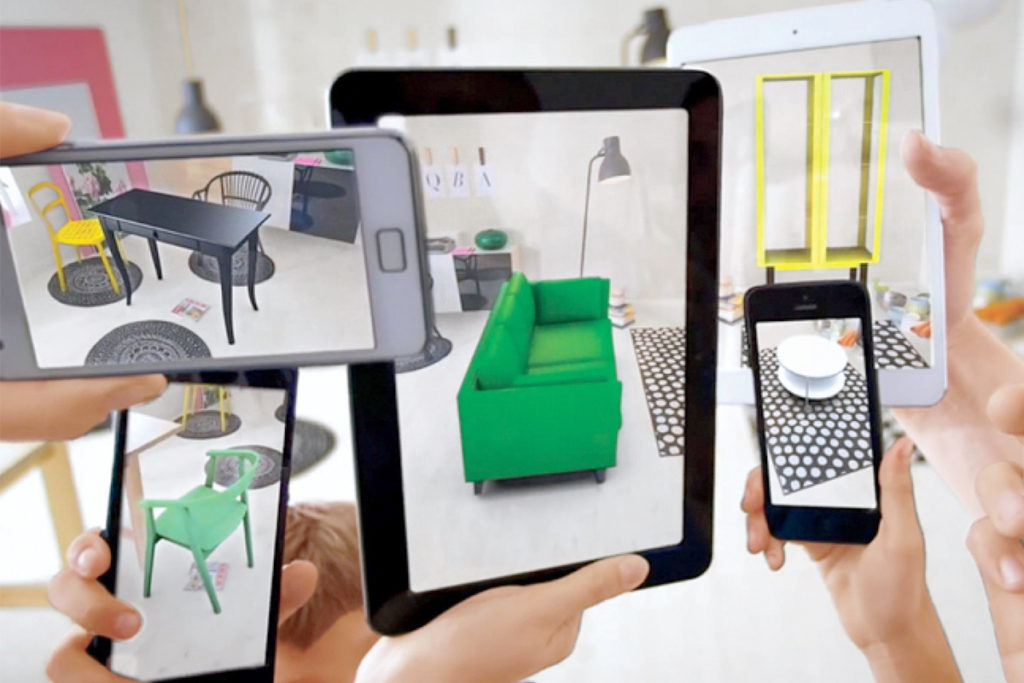
Lower Returns
After Macy’s used AR, they saw a threefold decrease in the number of returns among customers who tried their home furnishings before making the purchase. For obvious reasons, customers who use AR while they are shopping are able to make more confident decisions about their purchases and reduce the hassle of returns.
This leads to a better customer experience for the brand and lower overhead costs for the business since they do not have to handle as many returns any longer.
Premium Experience
Since brands do not have a way to leverage architecture and interior design to show the luxuriousness of their brands, they mostly rely on technology for it when they are selling products online.
Many customers consciously choose brands that offer a premium online experience rather than those with a more cliché e-commerce design. AR helps you create this difference and provide your customers with the special treatment that they expect when they visit your store.
Higher Revenue
Houzz is an American online furniture retailer which became a $4 billion company by using AR to create exceptional customer experiences. On Google Play Store, the app has 4.6 stars with great reviews from its users.
It was founded in 2009, which gave it very less time to compete with the big players in the industry, but it was able to capture the market quickly.
Being an early adopter of AR paid off well for Houzz. At a time when customers were just getting to know about AR, Houzz made it possible for its users to benefit from this technology by using AR in its app. The company claims that there was an eleven-fold increase in customers’ desire to purchase a product when they tried it in AR.
Like Houzz, any e-commerce website can increase the chances of a sale by using AR.
An Excellent Differentiator
AR makes a difference for brands helping them stand out in the digital space by using a technology that few others are currently using to improve customer experience. If your competitors have already implemented this technology, then you should quickly transition to AR for your e-commerce website as well.
If no one else in your target market is offering AR, then use this technology as a differentiator to increase your sales, just like Houzz. According to a survey by Retail Perceptions, 61% of customers prefer to shop from an e-commerce website that uses Augmented Reality.
Supports independent buying behavior
Many buyers may delay a purchase just because they feel they should see how a product could look in a different color, or they may want to discuss with their friends and families if it would look good when they bring it home or not. AR helps them clearly visualize the product and buy it without having to validate their decision from friends and families.
Bizsol’s AR Solutions
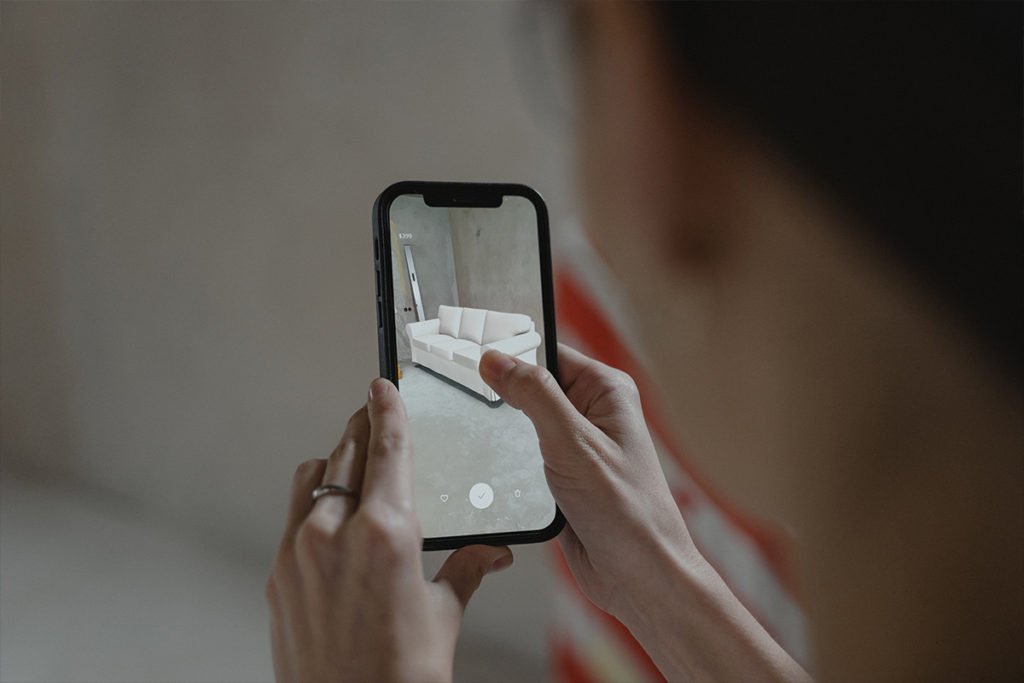
At Bizsol Tech, we have helped several clients overrun their competitors by using AR to transform e-commerce for target audiences. Customers are hungry for better visual experiences. They want to be more confident about the products they purchase online so that they do not have to deal with the hassles of returning the product later.
We create highly accurate product experiences that look great and provide your consumers with just the experience they need to make the decision to buy or not buy a product. While AR works excellently on mobile phones, the technology delivers somewhat partial results on computers. We make sure that your customers can experience good visuals on both phones and computers.
AR is not a special feature any longer
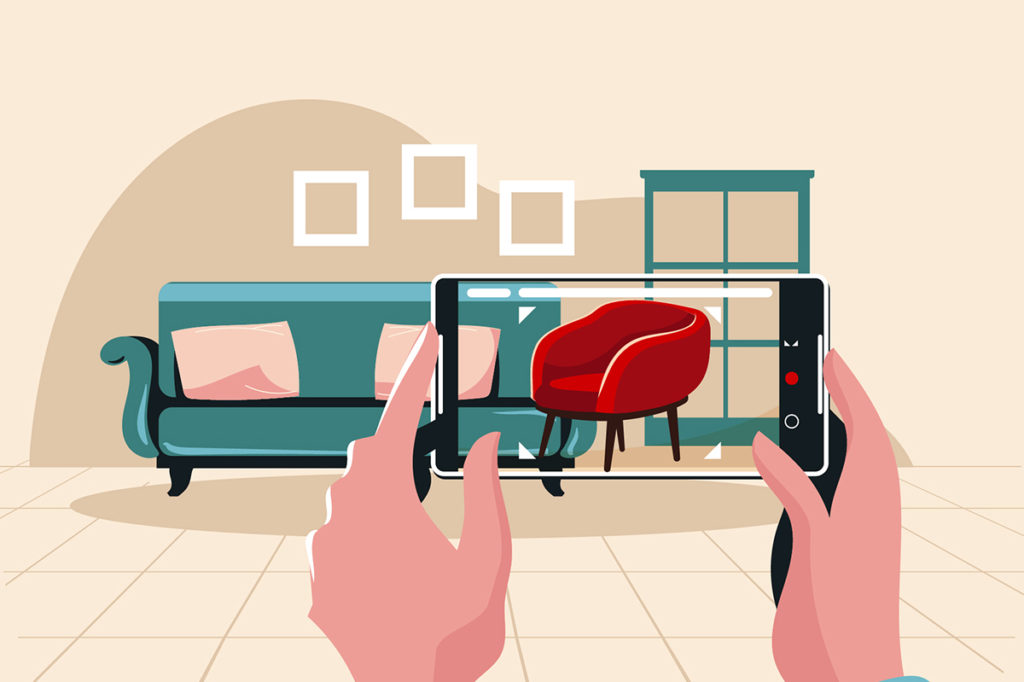
If you want to provide your buyers with an amazing online shopping experience, then you will stop seeing AR as a special feature. It is a necessity in the e-commerce industry, given its ability to support better buying.
While your competitors may be still looming over the idea of using AR on their platforms, you can take the advantage of being one of the first ones in your market to offer customers AR.
This will put you ahead of your competitors, increasing your market reputation and adding value to your brand. It can also improve customer loyalty and attract more new customers.

